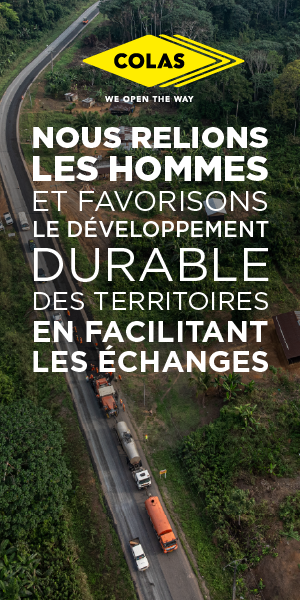Politique Internationale — When did we start making the link between CO2 and the climate?
Valérie Masson-Delmotte — Our understanding of the physics of the greenhouse effect dates back to the early 19th century, with the pioneering work on radiation transfer in the atmosphere by Joseph Fourier (1822), Eunice Foote (1856) – the first to suggest that CO2 was a greenhouse gas – and John Tyndall (1861), who demonstrated the absorption of infrared radiation by various gases. In 1896, Svante Arrhenius (1) made the first calculations of the sensitivity of the climate to the increase in atmospheric CO2 concentration induced by coal combustion.
During the 19th century, meteorological and oceanographic observation networks were also set up, and in 1938 Guy Callendar was able to show that the Earth’s surface temperature had risen over the last 50 years – a rise he explained by the increase in the atmospheric level of CO2. In 1957, Charles Keeling began the continuous observation of this concentration of CO2 in the atmosphere, and it was quickly established that its increase was linked to the combustion of fossil fuels. In 1967, Suki Manabe (2) was one of the first to model the climatic feedbacks, linked in particular to water vapour, which amplify the response of the climate to CO2, in addition to its direct radiative effects. In 1979, the Charney Report, drawn up under the aegis of the American Academy of Sciences, produced the first collective scientific assessment of CO2and climate, and in particular the first in-depth assessment of the response of global temperature to a doubling of its concentration (‘climate sensitivity’). In the 1980s, Claude Lorius and Jean Jouzel analysed core samples from Vostok in the Antarctic, highlighting the unprecedented rise in atmospheric CO2 concentration since the industrial revolution, and the close links between past variations in global temperature, sea level and greenhouse gas concentration during the glacial and interglacial periods. In the 1990s, Klaus Hasselmann developed attribution methods that enable the human influence on climate to be objectively assessed and quantified in relation to the natural factors of its variability – work that was awarded the Nobel Prize in Physics in 2021, and has now been extended to the attribution of human influence on the probability of the occurrence and the intensity of extreme events. Since the 2000s, satellite measurements have made it possible to discern the increase in the greenhouse effect, both at the top of the atmosphere and at the surface.
These chronological benchmarks are not exhaustive: they bear witness to the tremendous progress in knowledge of climate physics, which has been assessed in the six successive IPCC reports since 1990 (3). It is now unequivocal – it is an established fact – that the increase in concentrations of CO2, methane and nitrous oxide in the atmosphere is the result of human activities – 70% as a result of the combustion of fossil fuels, with the remainder coming from deforestation, the food system and industrial processes – and it is unequivocal that these greenhouse gas emissions are responsible for the build-up of heat in the climate system. In June 2024, we updated the key indicators of the state of the global climate, showing that the warming induced by human activities is equal to the warming observed over the last decade. This warming is +1.2°C compared with 1850-1900, with a record rate (+0.26°C in ten years) – 0.20°C being due to greenhouse gas emissions, and the rest to the reduction in emissions of pollution particles and the disappearance of their ‘parasol’ effect (4). We have also shown that global greenhouse gas emissions in 2022 were at a level comparable to that of 2019, but the cyclical effects are too marked to know whether a peak in emissions has been reached.
P. I. — How long have we been seeing the consequences of global warming?
V. M.-D. — The emergence of new climatic conditions – discernible beyond the variability of previous decades – occurred as early as the 1970s in tropical regions for the regional warming signal, and in the 1980s in Europe, for example. Warming is particularly pronounced over the continents and in the Arctic.
The rise in the sea level is a direct consequence of the accumulation of heat in the climate system due to human influence – the retreat of glaciers, the melting of Greenland and the accelerated draining of parts of Antarctica all add to the dilation of the ocean, which is warming at depth. And the rate of sea-level rise is accelerating: it has risen by 20 cm since 1900 (2 mm/year around 1990) to almost 4.4 mm/year over the last decade. Considerable progress has been made in attribution methods. They make it possible to link observed impacts to the events that cause them and to assess how their characteristics have been altered as a result of global warming due to human influence.
Some thirty climatic factors that generate impacts have now been identified. These include characteristics such as seasonal climatic conditions – temperature, rainfall, the state of glaciers, ocean acidification, rising sea levels, etc. – as well as the probability of the occurrence and intensity of extreme events, such as heat waves on land and at sea, extreme rainfall, agricultural droughts, the proportion of tropical cyclones of greatest intensity, hot and dry weather conditions conducive to fires, composite floods linked to extreme sea levels combined with extreme rainfall, etc.
For several decades now, we have been observing an intensification and worsening of the negative impacts linked to these consequences of climate change due to human activities, and losses and damage in all regions of the world. The latter are predicated upon exposure to climate hazards and the ability to cope with them. Around half the world’s population lives in highly vulnerable environments. The observed impacts of climate change are increasingly affecting water security, agricultural yields and food security, fisheries, health and well-being. There is an increase in morbidity and mortality associated with heat waves, but also vector-borne diseases and trauma induced by displacement caused, for example, by floods, forest fires and tropical cyclones.
The effects of climate change come on top of other pressures on ecosystems and biodiversity – destruction of habitats, overexploitation, invasive species, pollution – and have already caused significant damage to ecosystems, with mass mortality events both at sea and on land. Marine heat waves are responsible for a drop in sustainable fishing potential in the tropics, and for repeated coral bleaching, leading to the degradation of certain reefs. Heat waves and droughts lead to increased tree mortality and even forest dieback, particularly in France. The intensification of the water cycle and its variability, with a sharper contrast between seasons and very dry and very wet events, is often what makes climate change perceptible.
P. I. — Who is best placed to assess this climate risk?
V. M.-D. — Climate risks will depend first and foremost on the level and speed of future warming, and on the actions taken to limit the consequences, by acting on exposure and vulnerability. But there is currently a gap between the adaptation measures that are needed and those that are implemented, which are often reactive and insufficiently transformative.
The important point is that future climate change will depend on future greenhouse gas emissions, with a direct cumulative effect between the level of future warming and cumulative CO2 emissions.
As long as global CO2 emissions are not at net zero, the build-up of heat in the climate system will continue; if carbon neutrality is achieved, then there will be no further warming, but the slow components of the climate – glaciers, the deep ocean, the Greenland and Antarctic ice caps – will continue to adjust. This will inevitably lead to further sea-level rise, the extent and speed of which will depend both on the peak in warming reached and on Antarctic flow instability processes that are still poorly understood.
Assessing the risks associated with climate change requires an approach that cuts across many areas of expertise, at the crossroads of multiple disciplinary fields and multiple sustainability issues. It is also at the crossroads of many aspects of socio-economic development trajectories.
In the climate sciences, the co-construction of climate services plays an important role in mobilising our academic knowledge – observations, understanding of processes, evaluation of models, projections – and the knowledge of actors in the field (businesses, local authorities), so as to distil relevant, actionable information in support of risk management and transformative adaptation strategies that anticipate future characteristics. Of course, insurers, reinsurers and actuaries are at the forefront of this assessment of climate risks, which also involves those working in water management, forestry, urban planning and coastal zones, as well as those responsible for assessing the vulnerability and resilience of value chains.
The assessment of climate risks, adaptation options, the effectiveness of adaptation measures, but also their limits and the growing constraints in a warming climate (water resources, biomass, etc.) is the subject of multiple multilateral approaches within the IPCC, the United Nations Environment Programme (editor’s note: which assesses of adaptation action), the United Nations Convention on Climate Change and the Paris Agreement – including from the perspective of the new mechanism bearing on loss and damage.
P. I. — Who is best placed to decide on effective climate policies? Governments, climate scientists, businesses, representatives of civil society...
V. M.-D. — Our knowledge of the climate sciences enables us to characterise changes in the climatic factors that generate impacts in each region, for each sector of activity, for the state of ecosystems and biodiversity, depending on the level of global warming, and to assess the risks that stem from changes in exposure and vulnerability. They also help us to understand the geophysical conditions that will make it possible to limit global warming and the associated risks. The room for manoeuvre to limit global warming at different levels can be translated into residual carbon budgets: this is how ‘science- based’ objectives can be constructed and translated into European, national and regional policies, by sector of activity, and in corporate social responsibility.
Of course, scientists are not the ones who draw up climate policies, but they can carry out factual monitoring of objectives, the implications of commitments, and the effectiveness of public policies. For example, around twenty countries including France have succeeded in achieving a sustainable reduction in their greenhouse gas emissions: it is estimated that between 4 billion and 8 billion tonnes of greenhouse gas emissions have been avoided every year since 2015. Trajectories of sharp rises in greenhouse gas emissions are now less plausible, due to the public policies already in place and technological innovations – notably the falling costs of renewable electricity production and batteries. The commitments made at COP28 in Dubai – tripling renewable energies and doubling energy efficiency gains by 2030 – could reduce CO2 emissions from
fossil fuels by 10% by 2030. This is a significant gain, but at this rate it would lead to global warming of more than 1.5°C at the start of the next decade, 2°C around 2050, and between 2.5 and 3°C by the end of the century. This would not be enough to limit global warming to well below 2°C (editor’s note: the main objective of the Paris Agreement), and would entail increasing and serious risks, including an acceleration of sea-level rise over the coming centuries. This information, and its updating, supports robust decision-making mechanisms to build climate-resilient, sustainable development trajectories towards carbon neutrality.
I’ve seen an increase in the skills of actuaries, the financial sector with its SRI indicators and of companies, particularly in the context of CSR, but this will need to be strengthened in order to better integrate physical risks – including in value chains. There is a growing awareness of the public health challenges posed by climate change – extreme heat, infectious diseases, especially vector-borne diseases – which were given special attention at COP28. While the first global assessment of the Paris Agreement, at COP28, outlined without quantified targets the challenges of the energy transition associated with moving away from fossil fuels – which currently account for 70% of greenhouse gas emissions – I also see a real difficulty in bringing about changes in the food system, which is both vulnerable to climate change and responsible for around a third of emissions. The French High Council for the Climate devoted a special report to this issue last January.
P. I. — So it seems that there are no ambassadors of reference for the climate. At a time when social networks are being used on a massive scale, should we be dreaming of influencers, as already exist for commercial brands?
V. M.-D. — An effort, of course, has to be made to strengthen what we call ‘climate literacy’, i.e. enabling each person to understand the causes and consequences that are most important to them, both personally and professionally, and the levers for action. But work in the social sciences emphasises that this is not just a question of knowledge, but of collective dynamics. Individuals with the highest socio-economic status contribute disproportionately to greenhouse gas emissions. They also have the greatest potential to reduce these emissions, as investors, professionals, consumers and citizens, acting as role models – particularly in relation to the many forms of consumption associated with social prestige. The architecture of the choices presented to consumers can also help them to adopt low-carbon consumption habits. The inequalities that characterise the distribution of emissions, exposure and vulnerability to climate risks, and the effects of climate policies, can affect social cohesion and the support or rejection of these climate policies. Hence the importance of fair transition principles and deliberation processes involving a multitude of stakeholders.
P. I. — What about the public? To what extent do they perceive this risk? Are they in direct contact with its reality?
V. M.-D. — Thirty years ago, climate change was often perceived as a distant risk, affecting other regions or future generations. Today, in France as in every other region of the world, the impacts of climate change are becoming more acute: excess mortality and school closures during heatwaves; water supply difficulties; forest dieback as a result of drought, and large-scale forest fires; displacement of people and damage caused by flooding induced by extreme rainfall. These events show the limits of our ability to respond, and the need to develop infrastructures to make them more resilient, not just in a reactive way, but in anticipation of events of unprecedented intensity that will occur as global warming continues. How can we improve summer comfort in our homes, workplaces and towns? How can we reduce the risk of rapid flooding with torrential rainfall? How can we anticipate the decline in renewable water resources in summer? These issues of transformative adaptation are extremely important in limiting the increase in risks. In particular, the insurability of physical risks is a major issue, at a time when some local authorities are already finding it difficult to obtain insurance, and in the face of rising costs. On the one hand, I’m seeing an increase in the skills of certain people, who are taking these issues very seriously, both in their personal and professional lives. Opinion polls show that nearly 80% of Europeans want clearer and stronger action to limit both global warming and climate risks. This is also what emerges from citizens’ assemblies and conventions. But, on the other hand, many people are still far removed from the current state of knowledge about climate change due to human influence. They don’t make the link with the extreme events that sometimes affect them directly, are perplexed by injunctions to change long-established habits, and are sometimes suspicious of new technologies. The fact that, unless action is taken to reduce them, the consequences of climate change are likely to increase inequalities (health inequalities, territorial inequalities, economic inequalities) often flies under the radar. Conversely, the perception of injustice induced by certain measures aimed at reducing greenhouse gas emissions is very clear, as the Gilets jaunes crisis has shown.
P. I. — Is the era of climate scepticism over for good? In the same vein, what are the new forms of global warming denialism? Is climato-rassurism part of this trend?
V. M.-D. — Despite the advances I described a moment ago, there are still many positions that deny the scientific facts. Climate scepticism, which is a rejection and denial of scientific facts, was fuelled in the 1980s by the decision of American fossil fuel multinationals to play the role of doubt merchants with decision-makers and public opinion. A veritable machine for sowing doubt was set up, giving a voice to pseudo-experts to counterbalance the scientific findings and undermine the public debate, denying the reality of global warming, minimising the role of human activities in it, relativising the seriousness of the impacts, and questioning the reliability of climate models and projections. And yet, the observed effects of global warming were anticipated as early as the late 1980s. In the United States, this choice has led to tragic political polarisation, with the Republican Party making the rejection of climate science one of its guiding principles. I use the word tragic because it raises profound questions about the relationship between scientific facts and the preservation of the environment. In our country, as elsewhere, a great deal of attention has been paid to the opinions of leading figures, sometimes from other scientific backgrounds, who have questioned the knowledge gained from climate science. The historian Christophe Bonneuil recently showed how, under the Mitterrand presidency, the Rocard government’s desire to implement an ambitious climate policy between 1988 and 1991 was finally abandoned under pressure from French oil groups in particular.
Today, there is a set of recurring arguments that are widely disseminated and used as alibis to justify inaction, fatalism, the promotion of false non-transformative solutions, or the highlighting of the disadvantages and costs of climate action, without weighing them up against the climate risks. Such rhetoric is widely disseminated and relayed on social networks. Recent analyses have highlighted, particularly in Europe, large-scale disinformation aimed at undermining credibility and dividing public opinion on subjects such as nuclear power, renewable energies, heat pumps and electric vehicles. This misinformation is helping to degrade the quality of evidence-based democratic deliberation, and to reinforce scepticism – this time not about the problem of climate change, but about the solutions for dealing with it. In various parts of the world, climate and environmental policies are being targeted by populist political parties, particularly on the far right, which play down or deny the risks associated with climate change, reject the construction of climate policies by technocratic elites, fuel the polarisation of debates and weaken climate and environmental policies where they are elected. Comparative studies show that, following the experience of extreme events, it is in the best-functioning democratic systems that policies aimed at responding to climate change are put in place, notably because these democracies are better able to take into account the general interest and the perspectives of those who have been most affected.
P. I. — You mentioned the Gilets jaunes. How do you respond to the criticism that climate policy is being borne by the weakest?
V. M.-D. — I have touched on the issues of fair transitions and equity, which are essential to support climate action. We also need to be clear about our vulnerabilities in the face of climate risks, particularly the intensification of the water cycle and its variability (very wet and very dry seasons and events), which are one of the vectors of climate injustice. As part of the National Consultative Ethics Committee, of which I am a member, we are preparing a draft opinion on the ethical issues of health and climate. We recently heard from the director of the Regional Health Agency in Mayotte and the president of the Red Cross for the Pas-de-Calais département. Both areas have been hard hit: in Mayotte, the worst drought in 26 years has led to a serious water supply crisis – with water outages lasting up to three days in a row – followed by a health crisis, with a cholera epidemic. In Pas-de-Calais, successive floods affected almost 300,000 people, 10,000 homes, as well as farms, shops and businesses, affecting the mental health of people who were displaced. This highlights the vulnerabilities and the major challenges of risk management and adaptation, given that France is particularly exposed to climate risks. The 2024 report by the French High Council for the Climate highlights the specific vulnerabilities of children, including in terms of continuity of education.
P. I. — Internationally, we often see developed economies on a virtuous path pitted against developing countries whose climate objectives are still tenuous. Given the huge volume of emissions from rich countries in the past, does this confrontation make sense?
V. M.-D. — It’s true that the countries that industrialised earlier have a major responsibility for the accumulation of greenhouse gas emissions and the current level of global warming. But around twenty of these countries have managed to achieve a substantial reduction. In the United States, for example, emissions were down by 2% in 2023, or -17% compared with 2005, with a target of -50% by 2030, in particular through a strategy of industrial investment in decarbonisation. In China, emissions in 2023 saw a post-Covid rebound, but structural changes are underway, with massive investment in industrial capacity for low-carbon technologies, notably photovoltaics, electric vehicles and batteries. The year 2023 was marked by a contraction in domestic demand for materials with a high carbon footprint (steel, cement) due to the slowdown in property construction. The increase in hydroelectric capacity, following a number of dry years and record installations of renewable electricity generation capacity, could see the start of a structural reduction in greenhouse gas emissions associated with electricity generation as early as 2024. In India, by 2023, three quarters of new electricity generation capacity will come from renewables, with an acceleration in photovoltaics. Worldwide, by 2024, investment in low-carbon energies will have risen sharply, reaching twice the level of investment in the fossil fuel sector – but the latter will not yet decrease. Only 15% of this investment is being made in the economies of emerging and developing countries, where two-thirds of the world’s population live: this clearly shows the efforts that still need to be made in terms of technology transfer and the financing of low-carbon energy projects where the need for access to energy is greatest, and where new infrastructure needs to be built.
P. I. — Is the world, in its current state, facing a series of conflicts – whether wars or economic battles – managing to keep the focus on climate as a priority?
V. M.-D. — In 2023 we saw a sharp rise in military spending, whose consequences for greenhouse gas emissions and the capacity for investment in climate policies are still difficult to assess. Russia’s invasion of Ukraine has directly resulted in greenhouse gas emissions estimated at 175 million tonnes in two years: military activities, vegetation fires, damage to energy infrastructures and the cost of reconstruction. The indirect effects on energy policies, ranging from accelerating the energy transition to diversifying long-term supply contracts and locking in emissions, are complex. They also affect the cost of energy, fuel poverty and purchasing power. The recurrence of tensions and crises is obviously likely to push environmental issues into the background. Despite the many geopolitical and trade tensions, the United States, China, the European Union and India (the four largest emitters of greenhouse gases) continue to discuss climate change issues. In contrast, climate change is not a priority for Russia, whose strategy focuses solely on the extraction, consumption and export of fossil fuels, and whose greenhouse gas emissions are expected to continue rising.
As far as the risks associated with climate change are concerned, some areas are much more exposed and vulnerable than others, and climate risks can spread between different regions of the world through their effects on food markets, ecosystems and supply chains. If adaptive capacities are not strengthened, climate change can lead to economic, social and political instability. In contexts with a high prevalence of poverty, inequality, climate-sensitive economic activities, insecure land tenure and weak institutions, the risk of exacerbating social conflicts is high. When economic development is weak, governance is fragile, and when political marginalisation is involved, shocks to agricultural production can also fuel local armed conflicts. It is vital to invest in adaptation in vulnerable regions if we are to reduce the sources of tension by promoting the reduction of poverty and food insecurity, access to water and the strengthening of institutions.
One breakthrough noted at COP28 was the establishment of a new fund for loss and damage, with a view to enabling post- disaster reconstruction in the most vulnerable contexts. The amounts needed are estimated at between $100 billion and $400 billion a year between now and 2030, but the pledges announced amount to only $800 million – less than the combined annual salaries of the world’s best-paid footballers – of which only $17 million will be provided by the United States, the largest historical and current emitter. It is clear how difficult it is to seriously integrate the costs of damage – many countries and economic players are highly exposed to mounting legal disputes. The US Environmental Protection Agency estimates that the social cost of carbon (the marginal cost of induced macroeconomic damage) is around $190 per tonne emitted, and a recent study by the US Bureau of Economic Research even puts it at more than $1,000. Integrating the cost of avoided damage, the cost of adaptation and the loss of ecosystem services is essential if the benefits of decarbonisation investments are to be properly assessed.
P. I. — Many of the actors who govern the economy, led by bankers and insurers, are now incorporating climate risk into their models. How do you see this development?
V. M.-D. — It is indispensible. It is, of course, essential to take into account both greenhouse gas emissions – in all three scopes, or emission types – and physical risks, so that investments can strengthen resilience and decarbonisation, and take better account of the impact on ecosystems and biodiversity. I have noticed that companies that develop best practices for their sustainability strategies are also high-performing companies that are attractive to young talent.
P. I. — Should there be a climate rating one day, just as there is a financial rating?
V. M.-D. — SRI indicators are already a new way of looking at the performance of economic actors. Within the UN framework, a group of high-level experts has formulated very clear recommendations on the integrity of carbon neutrality commitments by non-state actors, in terms of credibility and accountability: take into account scopes 1, 2 and 3; set precise targets for 2025, 2030 and 2035; rely on robust methodologies and reporting, both for greenhouse gases and for changes in land use (deforestation); explicitly integrate the exit from fossil fuels and their financing. The use of carbon credits in voluntary markets also raises a number of questions about efficiency and integrity, which underlines the need to tighten up the assessment criteria and focus on reducing emissions.
P. I. — Can we imagine a carbon credit for each inhabitant of the planet, based on their consumption?
V. M.-D. — I’m sceptical about this type of approach, and I’m more interested in providing consumers with reliable information on the environmental footprint of products and services, based on life- cycle analysis.
P. I. — On a personal note, aren’t you a little discouraged when you compare the intensity of your work and your messages with the slowness of improvement? Furthermore, don’t you fear that we are entering an era of cognitive dissonance, in which actions and constraints in favour of the climate will multiply while the planet continues to warm, at least for a few decades?
V. M.-D. — Not discouraged, but of course we have to persevere. Building action frameworks to protect the environment is a delicate and slow process, but they are bearing fruit, as we can see from the rate at which emissions will fall in France in 2024 – the 2030 targets are tenable. Setbacks are nonetheless possible. I think we need to highlight the progress that has been made, and the efforts that still need to be made. Climate action is moving forward, but too slowly in the face of a rapidly changing climate. I am personally very concerned about the suffering caused by this time lag: staying the course on decarbonisation, building transformative adaptation are essential to protect people, businesses and economic activities. This is the message of the High Council for Climate 2024’s assessment, published before the summer.
(1) Svante Arrhenius won the Nobel Prize for Chemistry in 1903.
(2) Suki Manabe was awarded the Nobel Prize in Physics in 2021.
(3) Voir www.ipcc.ch
(4) https://essd.copernicus.org/articles/16/2625/2024/




















